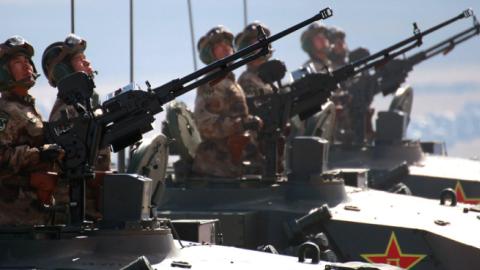Iran sabotages ships in the Persian Gulf and threatens to resume enrichment of uranium for its nuclear program. Russia dispatches troops to beleaguered dictator Nicolás Maduro of Venezuela, while China sends logistical support. China resists a trade truce with the U.S. and seeks to drive a wedge between the U.S. and allies like Jordan and Saudi Arabia by selling them armed drones. Russia sends bombers and fighters into Alaska’s Air Defense Identification Zone. Iran, Russia and China all work tirelessly to keep Syrian dictator Bashar Assad in power.
In the aftermath of the Iran nuclear deal in August 2015, I warned of a Moscow-Beijing-Tehran axis Since then, these three authoritarian and revisionist powers have become bolder, more sophisticated and more global. Their effort to diminish and disrupt the influence of the U.S. and its allies extends from Syria and the Strait of Hormuz to North Korea and Latin America, as well as Central Asia and even the South Pacific.
This axis is not a formal military alliance or even a coordinated conspiracy. The three powers have different goals in international affairs. China’s is global hegemony; Iran’s is to become a regional as well as a nuclear power; Russia is struggling to stay in the superpower game. China’s primary focus is on gaining economic power. Russia’s is on asserting its geopolitical clout. Iran’s agenda is largely ideological—to be the guiding voice of a regional Shiite revolution and of radical Islam.
Read the full article in the Wall Street Journal "here":https://www.wsj.com/articles/the-growing-menace-of-the-moscow-beijing-t…



















